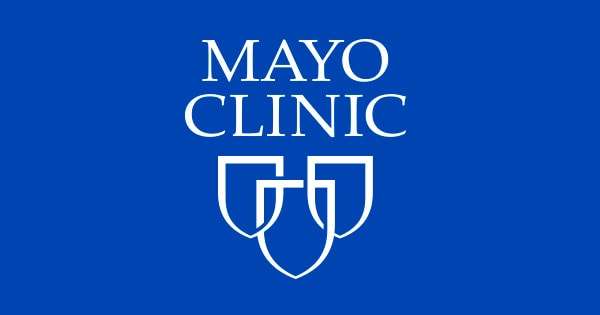The body is naturally designed and made to be able to build newer bones when the need arises. Studies on animals and humans have shown that red and infrared light therapy greatly aids in healing breaks, fractures, and bone defects. In 2013, researchers in Sao Paulo, Brazil, studied the effects of red and near-infrared light on rat bones’ bones’ healing process. Upon a piece of bone being sliced from the upper leg in an “osteotomy” of 45 rats, the rats were split into three groups — Group 1 Received no light, the second group were administered red light (about 660–690 nm), and the third group was placed on exposure to near-infrared light (about 790- 830nm)
The study found “a significant increase in the degree of gray level (mineralization) in groups treated with the laser after 7 days” and “after 14 days, only the group treated with the laser therapy (red light and near-infrared light) in the infrared spectrum showed higher bone density.
Red light and near-infrared light have been shown to stimulate energy production in the bone cells, improve blood vessel formation, circulation, and blood flow to the affected area, regulate and decrease inflammation, increase bone growth factors, enhance the production of collagen and procollagen, which stimulates the growth of bone cells.
Because ATP production is interrupted in broken bones, and cells begin to die due to a lack of energy, the right kind of red light and near-infrared light therapy has shown increased bone formation and collagen deposition. It’s no wonder red light, and NIR is gaining so much momentum in sports teams among athletes. Many pro teams now use light therapy to speed recovery and get their players back in action after an injury, more every year. Red and near-infrared light wavelengths can penetrate deep into tissue and bone for all kinds of healing effects. Concentrated natural light stimulates the mitochondria in the cells, reducing oxidative stress and helping the body to produce more usable energy to power itself, regenerate, and heal.
Light Therapy Benefits for Bone:
- Increases bone mineral density and bone structure: Preliminary research shows benefits for improving osteoporosis, including a boost in osteogenesis, increased stress load, and preserved vertebrae strength
- Strengthens bones: Increases osteoblast proliferation, collagen deposition, and 3 bone neoformation when compared to bones not treated with red light, and increases maximum bone tolerance
- Improves bone healing: Accelerates bone healing in extraction sites, bone fracture defects and distraction osteogenesis
- Reduces swelling from bone injuries: A proven anti-inflammatory treatment indicated by the FDA that has been shown to curb swelling in facial bone fractures
- Enhances overall bone health: Increases natural collagen production, which is essential to healthy bones and skin
References
- Lasers Surg Med. 2010 Aug;42(6):519-26 – PubMed
- J Biol Chem. 2002 Apr 19;277(16):14221-6 – PubMed
- Lasers Surg Med. 2006 Jan;38(1):74-83 – PubMed
- Bone. 1988;9(2):73-9 – PubMed
- Nature. 2003 May 15;423(6937):337-42 – PubMed

Infrared and red light therapies have been proven to be beneficial for a number of conditions and diseases. The natural, non-invasive, detoxifying therapy remedies the root cause of the health condition rather than just treating the symptoms unlike modern medicine which aims to treat symptoms.
Red light therapy hasshown positive results for bone health, especially for the treatment andhealing of bone injuries, and the reduction of pain and swelling.
Bone densityand the ability of the body to regrow bones is important for those recoveringfrom injuries. As we age, our bones tend to weaken progressively,increasing our risk of fractures. The bone-healing and re-growingbenefits of red and infrared light are very well established.
Benefits ofRed Light Therapy for bone health are:
- Accelerates bone healing
- Improves bone structure and density
- Increases natural collagen production
- Morenew bone growth
- Maximumbone tolerance measuring overall strength
- Improvebone biomechanical properties
Red and near infrared light wavelengths are able to penetrate deep into tissue and bone for all kinds of healing effects. Concentrated natural light stimulates the mitochondria in the cells, reducing oxidative stress, and helping the body to produce more usable energy to power itself, regenerate, and heal.
Red Light Therapy has proven effective treatment at reducing pain and swelling from bone injuries—improving function and movement, and strengthening the bone itself. Now red light therapy devices are also being used to strengthen healthy bones and prevent future injuries in clinics and training facilities across the world.
This treatment is very appealing for treating bone injuries because it is natural, non-invasive, chemical free, with no side effects.
Athletes take exercise and training very seriously to maximize and improve performance. Whether you’re a competitive elite athlete or someone who’s just born to win every day, recovery can be one of the most neglected aspects of our daily lives.
Recovery: We hear it all the time from coaches and instructors, but it’s also one of the hardest things to do. The saying “Push yourself to your limits” happens also to have its own limits. Neglecting your training recovery aspect for optimal performance can take a toll on our body in the long run.
In this article, we show the importance of rest and recovery and some of the ways to speed up our body’s healing process, such as integrating red light therapy treatment.
What is Recovery?
After training or a strenuous workout, our body responds to strain, injury, or stress as a defense mechanism in inflammation. While it may sound damaging, inflammation is a natural response when our muscle tissue regenerates and grows from microtears. Going through the process is important to allow muscle growth and performance improvement. However, the inflammation needs recovery for your muscles to heal from too much strain or injury for it to maximize its healing effects.
Recovery is the process that your body undergoes to recuperate between training sessions or from the time of danger to its healing progression. Recovery works by giving your body time to regenerate muscle tissues.
Whether it’s a strain, acute soreness, or severe damage, your body needs time to heal. The time needed for the recovery process is also dependent on the severity of the damage/strain/injury. This means that the greater the stressor’s intensity to your body, the longer the time you need to spend to allow your body to recover.
What are the Examples of Recovery?
- Getting enough sleep
- Resting
- Cooling down
Why is Recovery Time Important?
Many athletes have made recovery time a priority as it assists in the healing process of muscles post-inflammation. Giving your body time to recover can result in an improved performance.
During the recovery time, the muscle repairs regenerate and strengthens to tolerate a higher level of strain the next time. In other words, taking time to heal makes you stronger and less susceptible to future injuries. Having enough recovery time helps in optimal performance and longevity by helping the athletes convalesce both psychologically and physically to train and perform better.
By doing this, you can prevent future chronic problems, decreased sports performance, increased risk of injuries, or fatigue caused by inadequate healing.
What are the Ways to Speed Recovery?
1. Plan Your Rest Time
Planning your rest schedule and duration involves many factors such as the intensity of your activity, your age, and your skill level in sports/pieces of training. You may need less time to recover or more, depending on your personal needs. As a general rule, for medium to intense workouts/training, it is prescribed to maintain a healthy duration of 45 hours in between training.
Pro tip: Engage in Active Recovery
If you’re not suffering from an injury or severe damage, it’s important to incorporate active recovery periods during your recovery time so your body can maintain its active state.
Proper blood circulation is important in the recovery process. When the body gets injured, the body responds by dilating blood cells to speed up blood flow. Active recovery helps maintain good blood circulation and removes lactic acid out of inflamed muscles. Active recovery activities involve light physical movements such as stretching or yoga to allow proper blood flow and help your muscles recover and adapt better.
2. Get Enough Sleep
The Human Growth Hormone (HGH) is at its peak at night as we sleep. This hormone is responsible for tissue repair and recovery. This is why the key to a speedy recovery is to make you get a good REM sleep at the right time during your recovery period. Make sure to get a minimum of 7 hours of sleep at night to ensure that your body gets enough rest that it needs and to avoid any future complications. Lack of sleep can deter the process of muscle recovery.
Pro tip: Don’t be scared of having a few extra hours
Especially when you are suffering from intense strain/injury, it’s important to sneak in a few extra hours of sleep within your recovery period. In fact, a 2018 study suggests that sleep extension, a form of sleep intervention, can significantly contribute to the success of an athlete’s recovery. One way to ensure you get a significant amount of rest is to make sure your body has a healthy circadian rhythm. If you’re worried that you’re having trouble sleeping at night, there are many ways to improve your circadian clock- including red light therapy.
3. Refuel your Body
A healthy diet is also one of the great pillars of health. The nutrients you take in play a great role in your body’s function to cooperate with the recovery process. Minimize processed foods that may contain too much salt, sweets, and alcohol. These types of food may promote inflammation and dehydration, which can hinder the recovery process. Make sure to eat a balance recommended diet of whole foods.
Have an evaluation with a licensed dietitian or nutritionist to assess your nutritional needs. Assessment may vary depending on different factors such as weight, BMI, and activity level.
Pro tip: Focus on your Protein Intake
Protein is the key macronutrient that is responsible for muscle building and repair. It has amino acids that are metabolized by your body to ease muscle inflammation and build stronger muscles. Skip gulping on those protein supplements and focus instead on taking protein from whole foods such as lean meat, eggs, and cheese.
4. Listen to your Body
There can be all kinds of rules in recovery to maximize healing, but you can’t go wrong with paying attention to your body’s signals. Often, your body’s responses can be neglected. However, overlooking these signals can result in overtraining, which puts your body at risk of having more problems in the long run.
Despite your recovery time or period, if your body signals indicate pain and soreness, it’s important to give it time to recover better to address the issue. Aside from obvious physiological signs, pay attention to your heart rate variability, indicating your body’s adaptability to stress and your overall cardiovascular fitness.
5. Incorporate Red Light Therapy
Thanks to innovative medical devices, athletes and trainers have utilized more advanced healing modalities like red light therapy. Red Light Therapy is a popular, non-invasive, and effective light therapy treatment that can improve blood circulation essential for tissue and muscle recovery. It works by using LED to deliver wavelengths that deeply penetrates the skin and cells.
Integrating red light therapy in your recovery process can speed up muscle repair and minimize pain and swelling. The therapy accelerates the healing process by enhancing macrophage activity responsible for the white blood cell’s healing and anti-inflammatory response.
Pro tip: Try using Light Therapy Body Pad
Kaiyan Medical’s Light Therapy Body pad utilizes a high-end, medical-grade dual optical energy pad that uses 30 pieces of red light and 30 pieces of infrared light. The therapy’s duality promotes deep treatment by treating injured skin surface while repairing deeper muscle, bones, tissue, and joint damage. The therapy pad is specially made with a broader light spectrum to increase absorption and penetration so you can maximize the treatment’s benefits. It’s a safe, non-invasive treatment that you can add to your recovery process so you can get back in the game stronger than ever.
Recovery and Rest are just as important as optimizing and improving performance. Allowing your body to maximize its natural healing processes can improve performance and overall better physical and mental health.
More References
Ratamess NA, Alvar BA, Kibler WB, Kraemer WJ, Triplett NT. American College of Sports Medicine position stand. Progression models in resistance training for healthy adults. Med Sci Sports Exerc 2009.
Garber CE, Blissmer B, Deschenes MR et al. American College of Sports Medicine position stand. Quantity and quality of exercise for developing and maintaining cardiorespiratory, musculoskeletal, and neuromotor fitness in apparently healthy adults: guidance for prescribing exercise. Med Sci Sports Exerc 2011.
Michael Kellmann, Maurizio Bertollo, et al. Recovery and Performance in Sport: Consensus Statement. Int J Sports Physiol Perform. 2018 Feb 1.
So-Ichiro Fukada, Takayuki Akimoto, Athanasia Sotiropoulos. Role of damage and management in muscle hypertrophy: Different muscle stem cells’ behaviors in regeneration and hypertrophy. Biochim Biophys Acta Mol Cell Res. 2020 Sep.
Daniel J Plews, Paul B Laursen, et al. Training adaptation and heart rate variability in elite endurance athletes: opening the door to effective monitoring. Sports Med. 2013 Sep.
Michael R. Irwin, Richard Olmstead, Judith E. Carroll. Sleep Disturbance, Sleep Duration, and Inflammation: A Systematic Review and Meta-Analysis of Cohort Studies and Experimental Sleep Deprivation. Biol Psychiatry. 2016 Jul 1; 80(1): 40–52.
https://www.medicalnewstoday.com/articles/247927
https://www.webmd.com/men/features/benefits-protein#1



